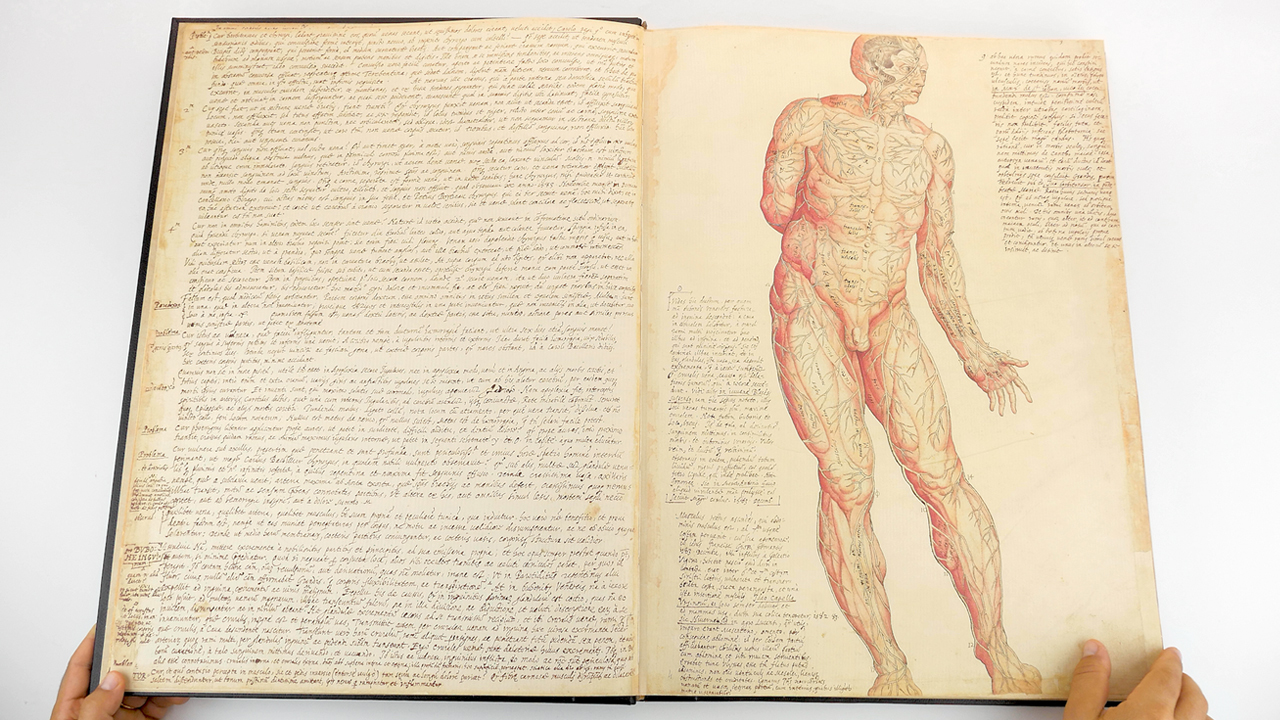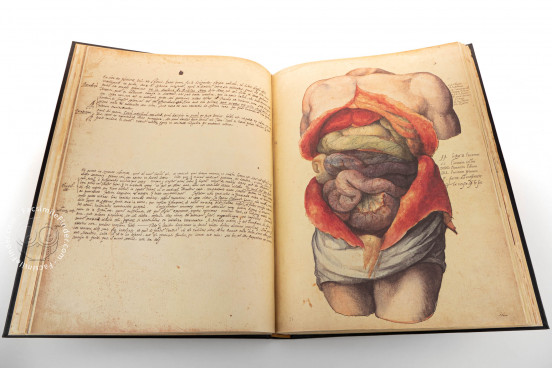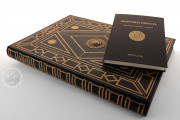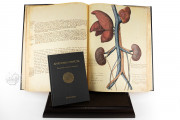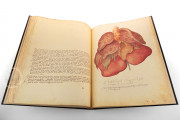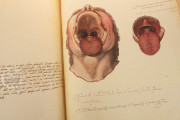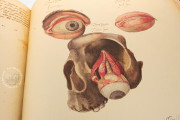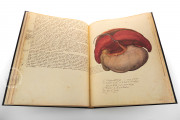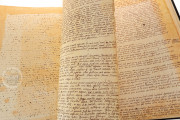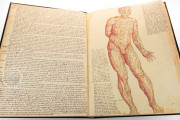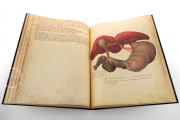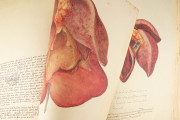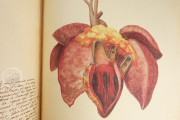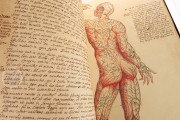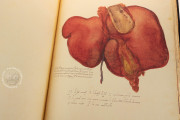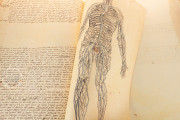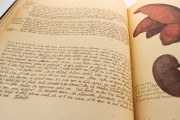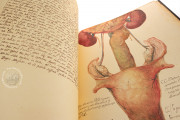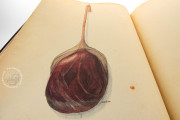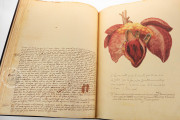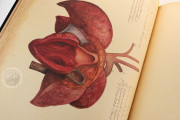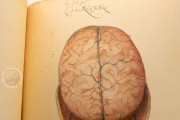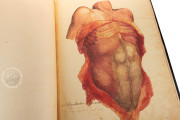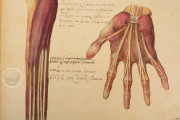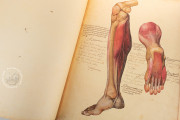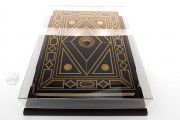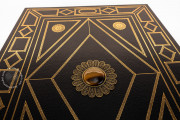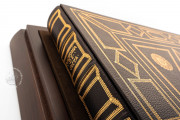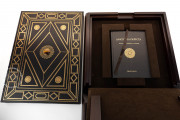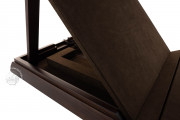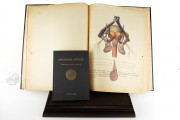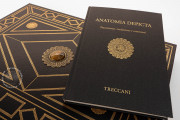Anatomy Depicted is an autograph manuscript of Filippo Cavriani's observations on human anatomy. It was written and supplied with illustrations in two campaigns, probably beginning in 1584 and ending around 1600, when four paintings of the anatomy of the human eye were added at the end. Cavriani was employed at the French royal court when he copied the text, probably in Paris. Cavriani's text is amply illustrated with sixty-seven full-page compositions, three showing the human muscular and vascular systems and the remainder being detailed images of organs—singularly or in groups.
Cavriani (d. 1606) was an Italian humanist who served as a court physician. His anatomical observations are presented in Latin prose peppered with words and phrases in French and Italian. His text appears almost entirely on versos (left-hand pages) in the bound volume opposite the appropriate illustration on the facing recto (right-hand page).
Organs in Isolation and In Situ
The images frequently depict an organ—e.g., heart or brain—or body part—e.g., hand or foot—in isolation. The organs are often shown in section so that both the outside and inner surfaces can be seen. There are also abundant images of organs within the human body, the skin shown peeled away to reveal the details described in the text. The first two images have captions in Latin. The remaining have the parts of organs labeled in French and Italian.
Coordination of Images and Captions
Letters of the Latin alphabet on the paintings and introducing the labels clarify which parts of the painting correspond to which labels. For example, in one of the paintings of the heart (fol. 92r), the left pulmonary artery is labeled "A." Below the painting, the names in French and Italian (and, in this case, brief explanations of the function) are similarly marked. Most of these coordinating letters are in brown ink, but they are in white ink when the painted color underneath is dark.
A Characteristically Italian Script
Cavriani wrote the main text in Cancellaresca, a script developed in Italy from Humanistic Minuscule. The text is divided into sections devoted to particular organs and further by headings such as "problem," "rarities," and "paradox." Some paragraphs are headed simply "to be noted." The text, then, is not a treatise on anatomy but rather a loose collection of personal observations.
The pages with the paintings were created separately from and after the text proper was transcribed. Various papers were used, and two anonymous scribes supplied the captions on those pages. They both wrote in a script that more resembles modern Italic.
Paintings after Fabricius ab Aquapendente
Although the Cavriani pages treat the eye in both text and image (fols. 128-130), four oil paintings on paper of the anatomy of the eye (fols. 142-145) were included following Cavriani's text at the time the manuscript was bound. These copy engravings in De visione, voce, et audito by Fabricius ab Acquapendente (1537-1619), published in Venice in 1600.
"Discovered" in the Eighteenth Century
When the manuscript was in the library of Giovanni Giraldi (1712-1753), Giovanni Targioni Tozzetti (1712-1783) brought it to the attention of his fellow scientists. The manuscript was acquired in 1912 by the Biblioteca Nazionale Centrale from Savino Dal Bene. The binding, which is of Italian manufacture, of olive-black goat skin with gilt tooling (in the French style) dates from the early seventeenth century.
We have 1 facsimile edition of the manuscript "Anatomy Depicted": Anatomia Depicta facsimile edition, published by Istituto dell'Enciclopedia Italiana - Treccani, 2010
Request Info / Price
